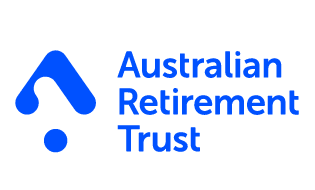Changing jobs this year? It might be time to switch up your super

A new job can be a great opportunity to reassess whether your current super fund is still right for your needs.
 Sponsored by Australian Retirement Trust. As one of Australia's largest super funds, with more than two million members, Australian Retirement Trust can help you achieve the retirement you're looking for.
Sponsored by Australian Retirement Trust. As one of Australia's largest super funds, with more than two million members, Australian Retirement Trust can help you achieve the retirement you're looking for.
When you change jobs, your old super fund ordinarily just carries over with you. So you can just set and forget, right?
Well, maybe not.
In fact, a new job can be a great time to reassess your super goals. It can also be a great springboard to determine whether your current fund is right for your needs or not.
So if you're in the process of changing jobs, we've got some questions you should ask yourself about your super.
Is your current fund helping you meet your retirement goals?
It's important to make sure you've got a super account that can help you reach your retirement goals.
There are a number of factors to weigh up – we'll take a look at a number of them in this article. Some of the most common considerations include:
- Fees vs the service and features you're getting
- The fund's historic performance
- Your risk profile which determines your suitable investment option, e.g. Growth or Balanced options
- Investment choices
- Insurance options
Although sometimes you can tweak your settings with your existing fund, changing jobs can give you the opportunity to make a wholesale change.

What's your super fund's track record for investment performance?
When you're considering super funds, it's very important to note that strong past performance doesn't guarantee future strong performance.
However, past performance can provide insights into how a fund acts as a steward for people's superannuation.
Let's look at the Growth and Balanced options from Australian Retirement Trust as an example.
Over the past 10 years, Australian Retirement Trust's Growth option has returned an average of 9.53% p.a.
Additionally, the June 2023 SuperRatings report found Australian Retirement Trust's Balanced option had outperformed the industry median over the last 20 years.1
When looking at how a super fund has been performing, it's important to look at it over an extended period – preferably at least a decade. Just looking at the past year or two is unlikely to give you a holistic picture.
What fund is your new employer offering?
Most Australian employers have a default superannuation fund.
So when you start a new job, it's worth looking into the specifics of their fund. You're in no way obliged to join your employer's fund, but you can if you want to.
It may be better aligned with your retirement goals, offer lower fees or a better track record.
However, it's not always cut and dried.
Sometimes it's worth consulting with a third-party financial advisor to see if making a shift would work well for you.
What investment options do you have access to?
We mentioned above that most styles of super investment can broadly be classed as "Growth" or "Balanced".
But it can be a bit more nuanced than this, too.
Some super funds allow you to get more granular with the actual type of assets your fund is invested in.
Eco-friendly and ethical investment choices have grown in popularity over the last few years, due to wider concern about the environment.
For example, Australian Retirement Trust offers sustainable investing, as well as a Socially Conscious Balanced option.
At time of writing, the return for the Australian Retirement Trust Socially Conscious Balanced option is 7.4% p.a. over 10 years.
Investment products like this can allow you to invest your super in areas that are more aligned with your own values and ethics.
What types of features and services can you use?
Fees are definitely an important consideration for super funds, but they shouldn't be viewed in isolation.
Instead of looking at fees on their own, you should also consider what services you're getting in exchange for them.
For example, Australian Retirement Trust offers a range of different services to its members.
Members are able to access advice from financial professionals and educational webinars, as well as face-to-face seminars and workshops.
They also have an Australian-based call centre, in addition to live chat support online.
Having support that you can easily access is crucial when you're looking to make informed decisions about your super.

Balanced and growth super options: Which is better for your needs in 2023?
SPONSORED: Both balanced and growth super investment options can offer a variety of benefits, and can be an effective way to grow your retirement savings.
Read more…Your super to-do list
Whether you choose to make a change in your super fund, or stick with your current one, there are still some super-related tasks worth doing.
These can help streamline your superannuation, and set yourself up for a better retirement in the long term.
❑ Check your projected superannuation – Finder's Superannuation Calculator can help you get an idea of how much superannuation you're likely to retire with, based on your current contributions and fund. ART also has a Retirement planner and calculator that can show you how long your super balance could last, based on how much money you might need in retirement.
❑ Consolidate your current super accounts – It's not unusual for people to end up with multiple super accounts, particularly if you've changed jobs multiple times. But you don't want fees and outdated super products to eat up your retirement savings. So you may want to think about consolidating your super accounts – we even have a guide to finding lost super. ART members can also do this online in just a few minutes. Before you consolidate your super, please consider if the timing is right and if you will lose access to benefits such as insurance or pension options, or if there are tax implications.
❑ Update your insurance – Many super funds provide some variety of insurance cover as part of their policy. It's always worth checking to see whether your current level of cover – if any – is correctly aligned with your current income, goals and family plans. Alternatively, you may want to switch it off, if you already have a policy from another provider.
❑ Compare super balances with your spouse/partner – Many couples have some level of disparity in their super. This can be due to a variety of factors, like working in different industries, differing levels of seniority or simply time off work due to child raising. But what can you do about this gap? Well, that leads us to our last point…
❑ Make additional contributions where necessary – Your employer is required to make contributions to your super fund on your behalf. But you're also able to make additional contributions to your own super fund, your partner's super fund or your children's super funds. This can be a great way to further benefit from compounded returns and boost your balance.
Learn how you can join Australian Retirement Trust
Compare alternatives
We currently don't have a partnership for that product, but we have other similar offers to choose from (how we picked these ):
Compare other super funds here
